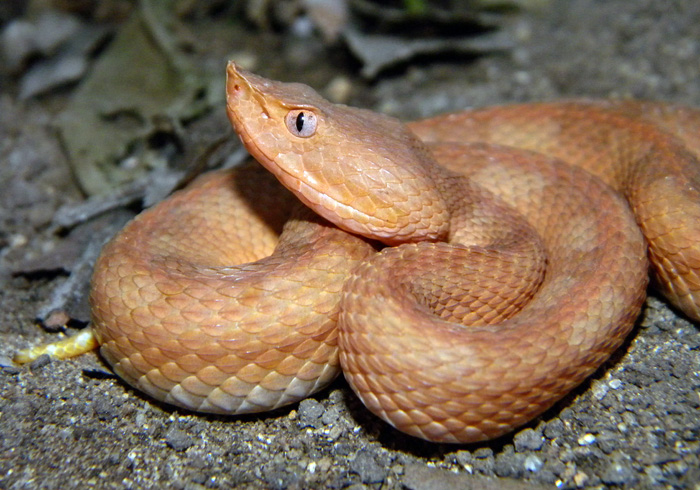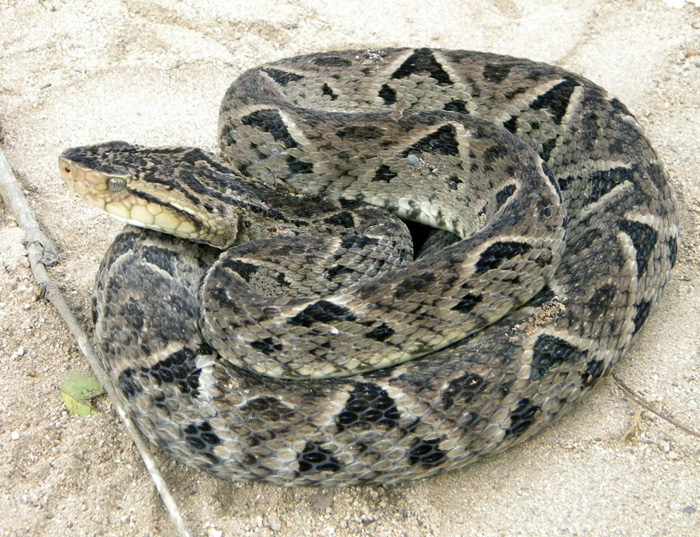Colombia has a stake richness that is not appreciated in scientific publications. The diversity exceeds more than 270 species, a horrifying number for some, but an advantage for the country. Just 48 (18%) are poisonous and represent a risk for humans.
These reptilians are present in the entire country, except at highs over 3,500 meters and Caribbean waters. For preserving them, the first thing is to identify the dangers that reduce the density and diversity of these reptiles, as well as knowing their geographical distribution.
Another threat is the recollection that scientists make, a practice that the Ministry for the Environment wants to penalize as illegal trafficking, since it is not justified. There are many difficulties in the classification of these problems. However, we can just estimate the importance of some items.
Bad reputation
There are not reliable data regarding the first threat (killings), for this reason, it has to be explore in order to quantify it. This analysis is the result of interviews made to peasants in different zones in the country, especially in low lands. They remember clearly when they used to go out to kill snakes.
Between two or three species are killed every day. Peasants think that all snakes (or similar animas) are poisonous. For these reason, they kill those that are harmless, blind, tatacoas, and lizards. This behavior can be novel since they are trying to protect their families, but ignorance deteriorates the biological richness, and even worse, it is transmitted through generations.
A peasant can kill between 700 and 1,400 individuals per year. When the number of rural families is considered and assuming the killings have the same extermination rate, this factor results in a number between 21 and 31 million of ophidians killed.
Adverse development
The second factor is associated to de degree of development in each region. The system of roads is not the same as well as the number of inhabitants. Mortality on the roads is well known, but it is not quantified by Colombian biologists.
These types of observations have been made in othe countries. Using recent data from Brazil, (the closest reference), mortality rate of stakes fluctuates between 0.9 and 1.9 per day on 67 km road, or between 1.4 and 2.8 snakes per day in a 100km road.
When these approximations are used, mortality in Colombia due to this factor could be of 52,000 and 105,300 snakes killed per year.
Reduction of their habitat
Regarding this topic, in the Andean region, environment destruction has the minor impact on snakes since there are just a few species. However, this area can be as big that it can represent an ecological "unit", such as coffee belt, where there reptilians are endanger.
In the departments of Caquetá and Meta, as well as in the region of Magdalena Medio, the destruction of humid natural environments has severely affected snakes, which are not capable of adapting to warmer and dryer environments; for this reason they have had to immigrate to other places that do not offer any protection.
The situation for native species of dry forest is different, since their micro clime is not that different from that of prairies. However, it represents a drastic change for these amphibians and other reptiles that are snakes" prays. This represents a direct impact.
According to field observers, the estimate cost of timbering can be estimated in the lost of between 100 and 250 individuals. If the annual rate of deforestation (natives and secondary) of 330,000 hectares is considered, the direct lost of snakes is between 33 and 82 million.
This is more serious that the indiscriminate killing by peasants. Likewise, if it is taken into account that 58% of the wood that is extracted from the forest is legal, that means it counts on permissions of Regional Autonomous Corporations (CAR) and the Ministry of the Environment, then it can be deduced that between 19 and 140 million snakes die under the permission of the government.
Trafficking, not less concerning
The trafficking of animals makes the situation worse, although it is restricted to some species. Some species such as güios (boa constrictor), which are appreciated in international and national markets: cascabels (Crotalus durissus), and some talla equis (Bothrops asper), used in traditional medicine, are the main target of traffickers. Due to this, between 1,000 and 5,000 individuals are killed every year.
 Correo Electrónico
Correo Electrónico
 DNINFOA - SIA
DNINFOA - SIA
 Bibliotecas
Bibliotecas
 Convocatorias
Convocatorias
 Identidad UNAL
Identidad UNAL




